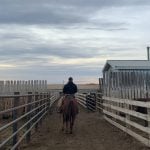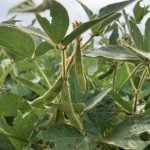REGINA – Taking soil tests can be a miserable job, but without information on what’s in the soil, fertilizer rates are just a guess.
At the recent Saskatchewan Soil Conservation Association conference in Regina, Adrian Johnston, an agronomist with the Potash and Phosphate Institute, outlined how fertilizer recommendations are made.
“The soil sample process involves collecting a sample, submitting it to a lab and having extractions done and chemical analyses done. Correlations and calibrations are done with a data set, then fertilizer recommendations are made,” said Johnston.
Read Also

VIDEO: Green Lightning and Nytro Ag win sustainability innovation award
Nytro Ag Corp and Green Lightning recieved an innovation award at Ag in Motion 2025 for the Green Lightning Nitrogen Machine, which converts atmospheric nitrogen into a plant-usable form.
“When you collect soil samples, most labs provide a process to it. It does have a lot of opportunity for problems because of inaccurate depth of sampling, handling the samples and post sampling treatment of the samples.
“Labs have good guidelines on how you can avoid these errors. Once samples get to labs, they’re subject to pretty rigorous extraction and analysis procedures.”
He said almost all soil testing labs in North America belong to a group that evaluates their procedures. The group sends samples out that have already been evaluated. The lab does an analysis and sends the results back. The group can then tell how close the lab was to the actual sample.
“It’s a proficiency testing system and most labs do subscribe to that. You should ask if your lab subscribes to the North American Proficiency Testing program and how well they’ve done in the past with it.”
When handling farmer samples, once the analysis is done, the lab does some work evaluating its results relative to some other data.
“Most labs in Western Canada have data sets that have been collected over time. They take your results and compare them to a data set. One question you might ask a lab is if they’re using data to correlate your sample against – find out where that data came from and is it relevant to where your samples were taken,” Johnston said.
Understanding how nutrients move in the soil can clarify how fertilizer recommendations are made.
“Nitrogen and sulfur are taken up by crops mainly as nitrate and sulfate. Both of those are negatively charged ions and because the soil has a net negative charge, they do not bind to soil particles. They’re repelled from soil particles, so they move in soil water. They’re drawn in by plants as plants take up water and they leach, come up with evaporation and things like that,” said Johnston.
“Immobile nutrients like phosphorus and potassium bind to soil particles and the zone through which they’re taken up is a lot smaller. This is important to remember when looking at soil testing philosophies, because it affects how you consider application of nutrients and how crops respond to a soil test level.”
A big issue for many farmers is nitrogen mineralization. Johnston uses some generalizations to estimate how much nitrogen can be delivered this way each year.
He said there are about 1,000 pounds of nitrogen per acre in the soil for every one percent of organic matter. But only about one percent of that 1,000 is available in any given year.
“For a soil with five percent organic matter, that means you could have potentially 50 lb. of nitrogen released from the organic matter during that year. If you have two percent organic matter, you might have 20 lb.”
In drier years, there will be less mineralization from the organic matter, while in wet years, there will be more mineralization and generally higher yields.
Johnston said the final fertilizer recommendations a lab provides are based more on the philosophy a lab adopts. They’re not a rigid science so two labs may produce different recommendations.
Johnston said the main recommendation philosophies include sufficiency, build and maintenance, and base cation saturation ratio.
“The sufficiency approach works from the system that at a certain level of plant nutrients in the soil, a crop response is likely no longer going to occur. … Below that point, there’s a higher probability that the crop will respond. Above the sufficiency level, no response is likely going to occur,” he said.
This recommendation system is used with the bulk of the nutrients, especially phosphorus and potassium.
“Basically, you apply a nutrient to maximize the net returns in a given year. Soil test levels in general are kept lower, so there’s (more of a chance) to get a response. This is a philosophy that’s used quite often when people are renting land, as opposed to building up fertility levels, because of the uncertainty of the long-term nature of their rent,” he said.
Some questions Johnston suggested farmers might ask about the sufficiency concept when they submit samples include, “what chemical is used to extract the soil sample,” “how do you determine the fertilizer required to meet that level,” and “what method of supplying nutrients are you using?
“If you farm in an area where the soils are very alkaline, you probably don’t want your soils extracted using a method that’s suitable for acid soils, because you’ll get a very inappropriate response.”
Johnston also said a farmer should ask if the lab has a data base representing his area to determine if its recommendation is worth using.
For example, there are many labs from areas where all fertilizers are broadcast. As a result the recommended rates will probably be much higher than a farmer is used to for potassium and phosphorus, because the efficiency of broadcasting versus banding is different.
Johnston said the build and maintenance approach is slightly different. It’s one the fertilizer industry likes a lot and is based on nutrients being applied in excess of crop removal.
“The reason is that you want to build your fertility levels up so there’s never a limitation of that nutrient. They’re linked to crop removal, and you’re trying to keep the tank full. Keep that soil test level above that level where you’re going to be triggering responses on an annual basis,” he said. “It’s more common with those nutrients that aren’t going to disappear from your soil, like (potassium and phosphorus) and based on a soil response as opposed to a crop response.”
While this system is not as common in Western Canada, it is a common practice in corn-growing areas, where high yields are more typical. Because the ability of plant roots to take up nutrients is limited, more roots are required to get absorption. So the more soil that tests high in phosphorus, the more opportunity for higher uptake.
Johnston said it’s also a more common practice on owned land versus rented land to make an investment for the future.
“If you wanted to add (potassium and phosphorus) to build up the soil, you’d have to add enough for the crop you grew. So if you were planning to grow a 50 bushel crop of wheat, you’d need a half a lb. of phosphorus for every bu., about 25 lb. of (phosphate fertilizer). Then to build your soil by one lb., you’d need between six and 14 lb. per acre of extra phosphorus. Six on the sandier soils and 14 on the heavier textured soils. For potassium, about four to eight lb. to change (the soil test reading) by one lb.”
Johnston said the base cation saturation ratio is a method developed many years ago, based on the concept that maximum yield is achieved with an ideal balance of cations, mainly calcium, magnesium and potassium. It doesn’t really apply to nitrogen, phosphorus, sulfur or most of the micronutrients, but it is used in some cases with micronutrients.
An ideal percentage of cation saturation is selected. One of the early ratios was 65 percent calcium, 10 percent magnesium, five percent potassium and 20 percent hydrogen.
“A lot of this early work on cation saturation was done on soils with low cation exchange capacities, highly weathered, low in nutrients and generally low in pH – not conditions we find commonly in Western Canada,” he said.
“On a Regina plains soil that had that ratio of cations, we had durum wheat grown with and without potassium on both lentil and chickpea stubble and we didn’t get much of a yield response. But if you followed those ratios, you would see a strong need for those nutrients.”
Johnston said if farmers ignore the total amount of nutrients in the soil when looking at ratios, they may be applying unneeded nutrients.
“When you have high levels (in the) soil like these soils did – over 500 lb. per acre in the top six inches – you have an abundant supply, regardless of how many other cations you have. So it’s important to note the strong limitations with that type of system.”
Some other methods used include crop removal and the plant root simulator probes. Crop removal is based on the concept of looking at yield goals and adding up nutrients required for that.
“In the case of 50 bu. of wheat, half a lb. of phosphorus per bushel and 1.7 lb. of nitrogen if you’re growing high protein wheat, that’s what’s in the grain that you remove from the field. Those are the kinds of rates you’d require to grow that type of crop on a soil that has a fairly good reserve,” said Johnston.
“It assumes that soil fertility is sufficient, all crop residues are returned and fertilizer additions will draw down on the soil fertility. It does ignore sufficiency. If you have a soil test in advance that you have high soil test (for phosphorus), then you don’t need to apply that amount because there’s enough in the soil and you’ll balance that over time.”
Johnston said this approach is often used in areas where nutrients are leached out on a regular basis.
Plant root simulator probes provide an assessment of nutrient supply based on the absorption to the probes inserted in the soil. A computer forecasting system provides fertilizer recommendations based on the yield goal set.
“When you look at nitrogen recommendations, labs use different types of recommendation methods.
EnviroTest Labs uses both removal and sufficiency, because they have a model they’ll use to calculate how much nitrogen they’ll recommend,” said Johnston.
“AgVise Lab uses a guideline and sufficiency system, as it’s in a higher moisture region with a fair bit of leaching. NorWest in Alberta uses sufficiency, MidWest uses removal and so does A+L. Those two labs tend to be in areas where a lot of these residual nutrients don’t remain over winter.”
He said most labs develop a production model that includes a bit of mineralization. They take away the crop removal, look at the return from residues, the efficiency of fertilizer added and come up with an elaborate calculation that helps determine what kind of rate they’re going to have.
“The strengths and weaknesses of those models are a function of the data the lab has, how that lab applies that data to your situation and whether it actually applies to your farm,” said Johnston.














